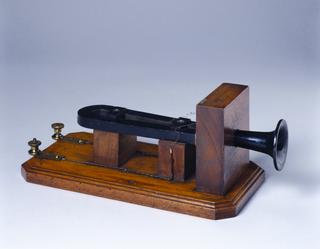
Lewis Howard Latimer 1848 - 1928
A Black American patent draftsman and inventor in his own right, Lewis worked with three prolific inventors in his lifetime: Thomas Alva Edison, Alexander Graham Bell & Hiram Maxim.
Lewis was born to Rebecca & George Latimer, a couple who had escaped slavery in 1842 to Massachusetts, the first state to abolish slavery (in 1783). However, the effects of slavery were felt by his family throughout his childhood. His father was arrested shortly after their escape and the subsequent trial received a lot of attention. George was able to purchase his freedom, but when Lewis was 10 the family was split after the Dred Scott case. This case ruled that living in a ‘free’ state did not entitle an enslaved person to their freedom, and that a slave-owner’s consent was required to prove their freedom. As George had nothing to prove his freedom, he fled to protect his family.
Early in Lewis' career as a draftsman he worked with Alexander Graham Bell to patent the telephone in 1876, before working as assistant manager and draftsman in 1879 for the U.S. Electric Lighting Company, which was owned by Hiram Maxim. Here he worked on the carbon filament lightbulb, work which he continued as an employee of Thomas Edison from 1884. He patented an improvement in the production of carbon filaments in 1882.
Whilst working for Thomas Edison as a draftsman he wrote the first book on incandescent electric lighting and supervised the instalment of electric lights across America and in London. He was also responsible for translating data into German and French.
Latimer received a number of patents independently, including a forerunner of the air conditioner called "Apparatus for cooling and disinfecting" in 1886. In 1894 he worked on inventing a safety elevator which prevented the riders from falling out and into the shaft.
